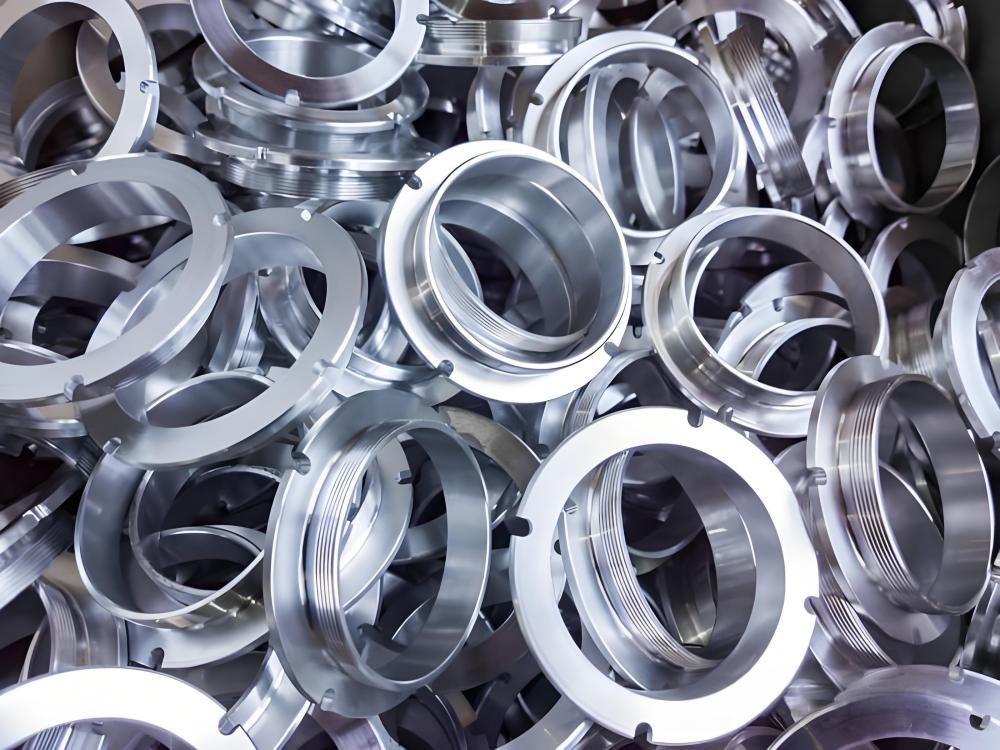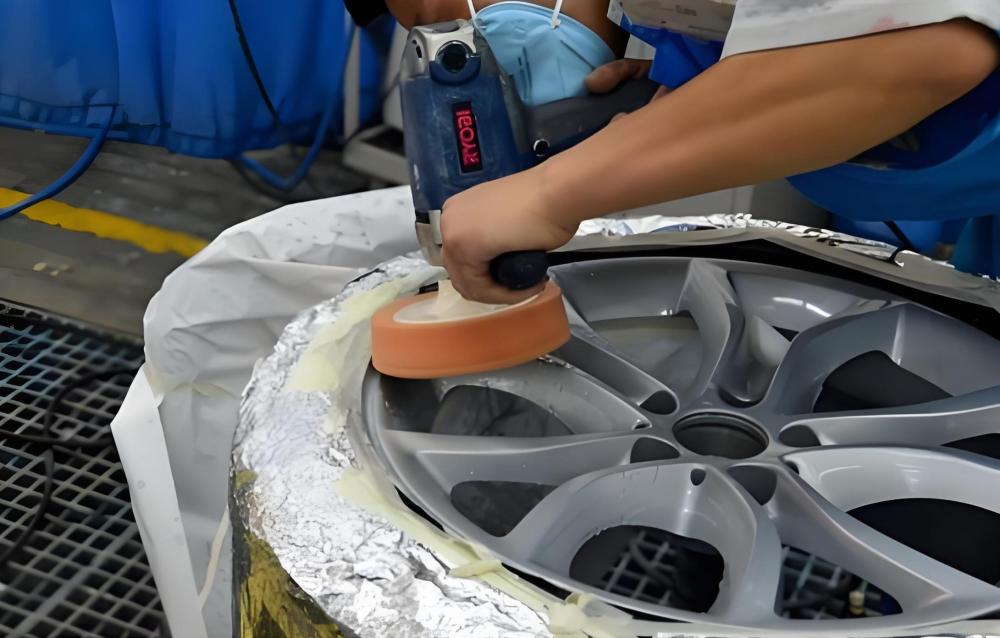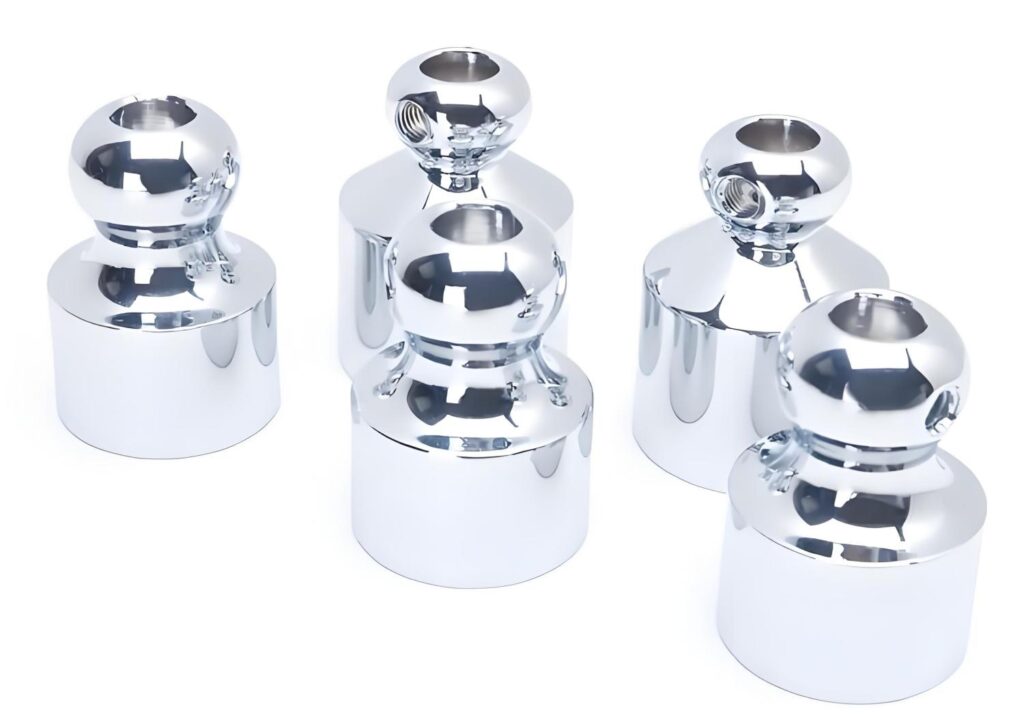What is Polishing?
Polishing is a finishing process used to enhance the surface of a material, typically metal, by removing imperfections, scratches, oxidation, and other surface contaminants. The goal is to create a smooth, shiny, and often reflective surface. In the case of aluminum, polishing is essential not only for aesthetic reasons but also for improving durability and performance.
Mechanical vs. Chemical Polishing
There are several types of polishing processes, but they generally fall into two main categories:
- Mechanical Polishing: This method involves using abrasives and polishing tools, such as sandpaper, buffing wheels, and polishing compounds.
- Chemical Polishing: This involves using chemical solutions to dissolve a thin layer of metal and produce a smooth surface. It’s more common in industrial settings where consistency and scale are crucial.
Why It’s Important to Polish Aluminum
Polish Aluminum isn’t just about aesthetics; it’s a critical step in maintaining the material’s integrity and performance. Aluminum is widely used across industries due to its lightweight nature, strength, and resistance to corrosion. However, exposure to environmental elements like moisture, salt, or pollutants can cause surface degradation over time. Polishing helps mitigate these issues by creating a smoother, more resistant surface.
Enhancing Durability
A polished aluminum surface is less prone to accumulating debris or moisture, which can lead to corrosion or staining. By removing micro-abrasions and imperfections, polishing reduces the surface area where contaminants can settle. This is especially beneficial for aluminum used in harsh environments, such as marine or industrial settings, where exposure to saltwater or chemicals is common.
Improving Aesthetic Appeal
Polish Aluminum has a distinctive, mirror-like shine that elevates the appearance of any product. For automotive enthusiasts, polished aluminum wheels or engine components add a custom, high-end look. In architectural applications, polished aluminum panels or railings contribute to a sleek, modern aesthetic. The reflective quality of polished aluminum also makes it a favorite for decorative items, from furniture to kitchenware.
Preparing for Further Treatments
Polishing is often a prerequisite for processes like anodizing, which adds a protective oxide layer to aluminum. A smooth, polished surface ensures better adhesion and uniformity for coatings or finishes, resulting in a higher-quality end product. For industries that rely on precision and consistency, such as aerospace or electronics, polishing is a non-negotiable step in the manufacturing process.
How To Polish Aluminum

Achieving a mirror-like finish on aluminum requires a systematic approach. Below is a step-by-step guide to polishing aluminum, suitable for both beginners and experienced professionals. The process involves preparation, sanding, polishing, and finishing, with careful attention to detail at every stage.
Step 1: Gather the Necessary Tools and Materials
Before starting, ensure all required tools and materials are on hand. Here’s what’s needed:
- Cleaning Supplies: Mild detergent, water, and soft cloths for cleaning the aluminum surface.
- Sandpaper: Various grits (e.g., 400, 800, 1200, and 2000) for wet sanding.
- Polishing Compounds: Coarse, medium, and fine polishing compounds (e.g., brown tripoli for coarse, white rouge for fine).
- Polishing Tools: A dual-action polisher, rotary buffer, or handheld polishing pads for manual work.
- Microfiber Cloths: For applying compounds and wiping down surfaces.
- Protective Gear: Gloves, safety glasses, and a dust mask to ensure safety.
- Wax or Sealant: To protect the polished surface after completion.
Having the right tools ensures a smooth process and professional results.
Step 2: Clean the Aluminum Surface
Start by thoroughly cleaning the aluminum to remove dirt, grease, or oxidation. Mix a mild detergent with water and use a soft cloth to wipe down the surface. For stubborn stains or oxidation, a specialized aluminum cleaner can be used. Rinse thoroughly and dry with a microfiber cloth to prevent water spots. A clean surface ensures that sanding and polishing are effective and prevents contaminants from scratching the metal.
Step 3: Sand the Surface
Sanding is critical for removing surface imperfections like scratches, pitting, or oxidation. Begin with a coarse grit sandpaper (e.g., 400-grit) and work in small, circular motions. Use water as a lubricant for wet sanding, which reduces heat and prevents clogging of the sandpaper. Gradually progress to finer grits (800, 1200, then 2000) to smooth the surface further. After each grit, wipe the surface clean to check progress. The goal is a smooth, uniform surface with no visible scratches.
Step 4: Apply Polishing Compound
Once the surface is smooth, apply a coarse polishing compound (e.g., brown tripoli) using a dual-action polisher or polishing pad. Work in small sections, applying the compound evenly and using moderate pressure. Move the polisher in overlapping circular motions to avoid swirl marks. Wipe off excess compound with a microfiber cloth and inspect the surface. Repeat with a medium compound, then a fine compound (e.g., white rouge) to achieve a high-gloss finish.
Step 5: Buff for a Mirror-Like Shine
For the final polish, use a clean, soft polishing pad with a fine compound or a dedicated aluminum polishing cream. Buff the surface with a rotary buffer or by hand, using light pressure to avoid overheating the metal. Work in small sections, checking for consistency. Aluminum should begin to reflect light like a mirror. If any dull spots remain, reapply the fine compound and buff again.
Step 6: Seal the Finish
To protect the polished surface, apply a high-quality wax or sealant designed for aluminum. This creates a protective barrier against moisture, UV rays, and contaminants, helping maintain the shine. Apply the sealant with a microfiber cloth, let it dry to a haze, and buff it off for a flawless finish. Regular maintenance with wax or sealant can extend the life of the polished surface.
Step 7: Inspect and Maintain
Inspect the aluminum under good lighting to ensure a uniform finish. If any areas need touch-up, repeat the polishing process with a fine compound. To maintain the shine, clean the surface regularly with mild detergent and reapply sealant as needed. Avoid abrasive cleaners or tools that could scratch the polished surface.
Common Mistakes to Avoid When Polishing Aluminum
Polish Aluminum can be straightforward, but mistakes can lead to subpar results or even damage the metal. Here are common pitfalls to avoid:
- Skipping Surface Preparation
Failing to clean the aluminum thoroughly before polishing can lead to scratches or uneven results. Dirt, grease, or oxidation trapped under sandpaper or polishing pads can cause micro-abrasions, ruining the finish. Always start with a clean, dry surface.
- Using Incorrect Sandpaper Grits
Jumping from a coarse grit to a very fine one without intermediate steps can leave visible scratches. Progress gradually through grits (e.g., 400 to 800 to 1200) to ensure a smooth transition. Rushing this step often results in a finish that looks polished but has faint scratches under certain lighting.
- Overusing Polishing Compound
Applying too much polishing compound can create a messy, uneven finish and clog polishing pads. Use a small amount and add more as needed. Excess compound can also splatter, making cleanup harder and wasting product.
- Polishing Too Aggressively
Excessive pressure or speed during polishing can overheat the aluminum, causing discoloration or warping. Use moderate pressure and keep the polisher moving to distribute heat evenly. If the surface feels hot to the touch, pause and let it cool.
- Neglecting to Seal the Finish
Polishing without sealing leaves aluminum vulnerable to oxidation and tarnish. A wax or sealant protects the shine and reduces the need for frequent repolishing. Skipping this step can undo all the hard work put into achieving a mirror finish.
- Ignoring Surface Imperfections
Polishing won’t hide deep scratches or pitting. These imperfections must be addressed during the sanding stage. Attempting to polish over them will result in an uneven finish. Take time to sand thoroughly before moving to polishing compounds.
Safety Precautions
aluminum polishing involves tools, chemicals, and processes that require caution. Here are essential safety tips to follow:
- Wear Protective Gear
Always wear safety glasses to protect against dust or debris. A dust mask is recommended when sanding or using polishing compounds to avoid inhaling particles. Gloves protect hands from chemicals and sharp edges on aluminum parts.
- Work in a Well-Ventilated Area
Polishing compounds and cleaners can release fumes that are harmful if inhaled. Work in a well-ventilated space, preferably outdoors or in a workshop with good airflow. If using a rotary polisher, ensure the area is free of flammable materials, as sparks can occur.
- Handle Tools Safely
Rotary polishers and buffers can cause injury if mishandled. Keep hands clear of moving parts, and secure the aluminum piece to prevent it from shifting during polishing. Unplug tools when changing pads or compounds to avoid accidental starts.
- Avoid Overheating the Metal
Polishing generates heat, which can burn skin or damage the aluminum. Work in short bursts, allowing the metal to cool periodically. If the surface becomes too hot to touch, stop and let it cool before continuing.
- Store Chemicals Properly
Polishing compounds, cleaners, and sealants should be stored in a cool, dry place away from heat sources. Follow manufacturer instructions for safe use and disposal. Keep these products out of reach of children and pets.
- Check for Sharp Edges
Aluminum parts, especially after machining or sanding, may have sharp edges. Handle them carefully to avoid cuts, and consider deburring the edges before starting the polishing process.
Tips for Polishing Specific Aluminum Items
Different aluminum items require tailored approaches to achieve the best results. Here are tips for common applications:

Automotive Parts
For car rims, bumpers, or trim, focus on even sanding to remove road grime and oxidation. Use a dual-action polisher for large surfaces and hand-polish tight corners. Apply a durable sealant to protect against road salt and debris.
Household Items
Aluminum cookware or decorative pieces often have intricate designs. Use soft polishing pads and fine compounds to avoid scratching delicate surfaces. Hand-polishing is often best for small or detailed items.
Industrial Components
Machined aluminum parts may have milling marks or surface irregularities. Start with aggressive sanding to remove these marks, then polish to a functional rather than mirror-like finish if the part prioritizes performance over aesthetics.
Troubleshooting Common Polishing Issues
Even with careful technique, issues can arise. Here’s how to address them:
- Swirl Marks: Caused by improper polishing technique or dirty pads. Use a clean pad and finer compound, and ensure even pressure during buffing.
- Dull Spots: Indicate incomplete sanding or insufficient polishing. Return to a finer sandpaper grit and repeat the polishing process.
- Overheating Discoloration: Caused by excessive heat during polishing. Sand down the affected area and polish with lighter pressure, allowing cooling breaks.
- Scratches After Polishing: Likely due to contaminated pads or skipping sanding grits. Start over with a clean pad and proper sanding progression.
Why Choose Precionn for Your Aluminum Machining Needs
Polish Aluminum may appear simple, but it requires a detailed understanding of materials, techniques, and tools. Whether you’re refining a component for high-performance machinery or restoring a household item, proper polishing not only improves appearance but also enhances performance and longevity.
Precionn is a trusted name in the machining industry, offering precision-engineered components and expert solutions to clients across the globe. With a focus on quality, innovation, and customer satisfaction, Precionn ensures that every aluminum part meets the highest standards. For tailored machining and surface finishing services, international clients can rely on Precionn for dependable, world-class results.
For more information about our services, feel free to visit our website or contact our expert team directly.

